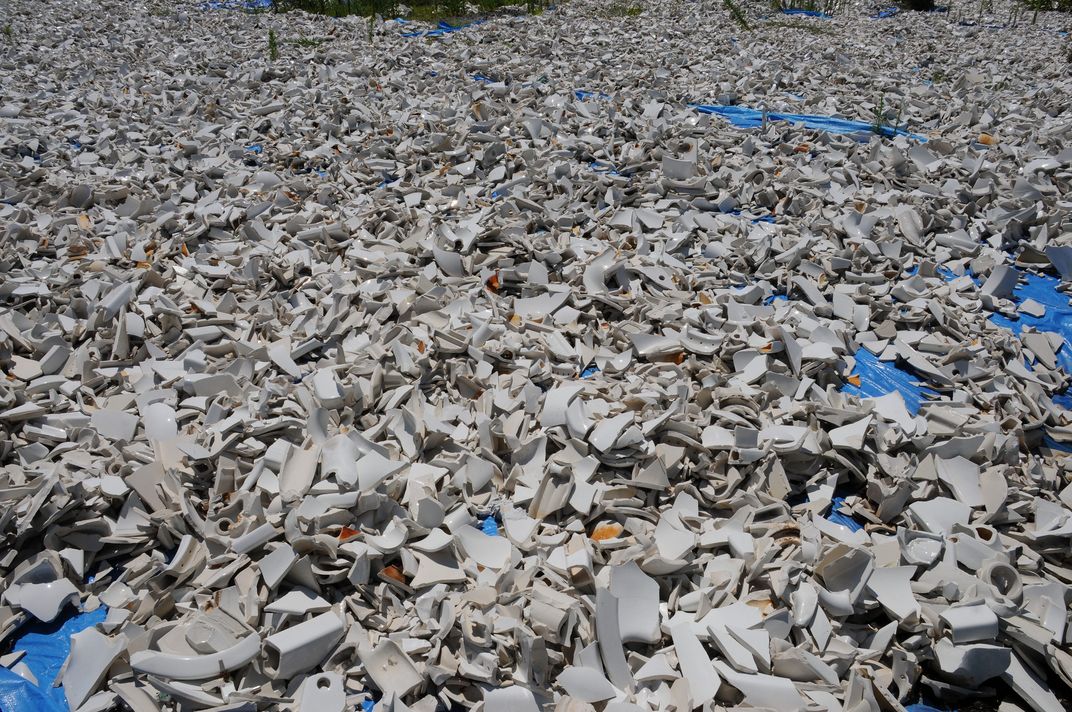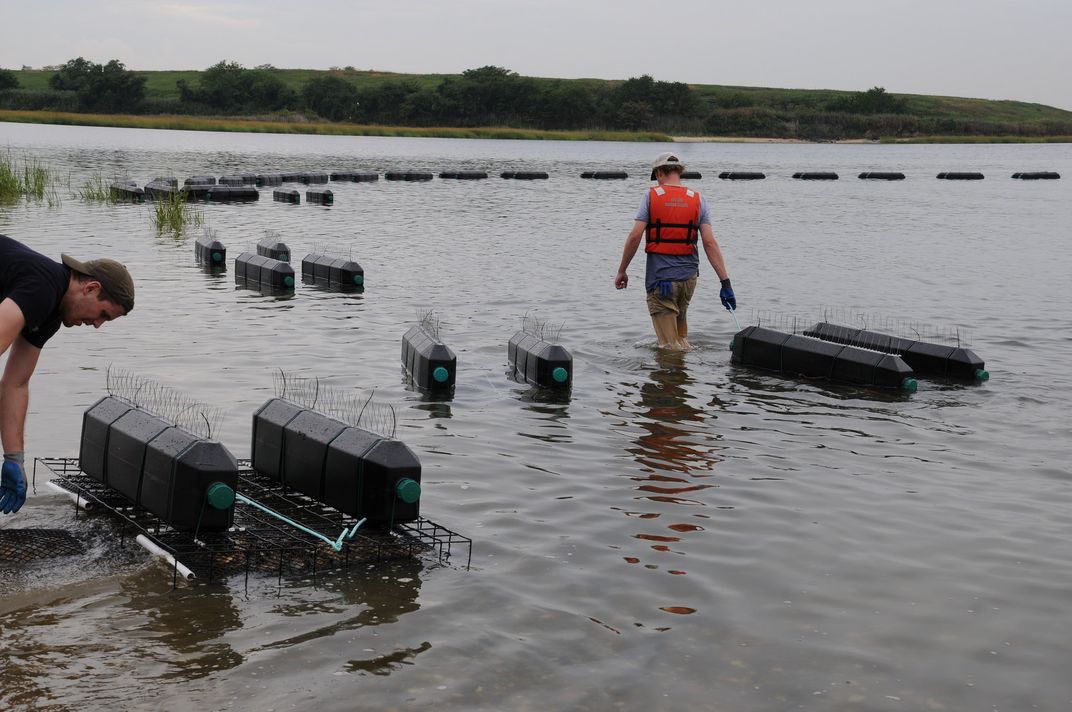Thousands of Toilets Submerged in NY Harbor Go From Bathroom Throne to Oyster Home
It’s much too soon to eat them, though
/https://tf-cmsv2-smithsonianmag-media.s3.amazonaws.com/filer/a2/b4/a2b46104-f80c-4e84-8f76-a9bdb30b7722/29299665662_20d95e28c4_k.jpg)
Chances are, eating any seafood that came out of the waters around New York City isn’t a good idea. While New York Harbor is somewhat cleaner than it was a few decades ago, centuries of heavy traffic, pollution and poor sewage infrastructure have taken their toll on the local environment. Now, one group of conservationists is trying to reintroduce oysters back to the area, and they’re starting off by dumping thousands of toilets into a nearby Jamaica Bay, Ben Guarino reports for the Washington Post.
Today, most people offered an oyster harvested straight out of New York City’s waters would rightfully turn up their nose. But for centuries they were considered among the world’s best. At one point, they were transported all over the world to the finest restaurants and oyster houses, Sarah Laskow writes for Atlas Obscura.
“It used to be known for its oysters,” Pete Malinowski, director of the New York City-based nonprofit Billion Oyster Project, tells Samantha Schmidt for the New York Times. “At one time, half of the world’s oysters were harvested in the New York Harbor.”
Sadly for seafood fans, that love eventually took a toll on the oysters. After years of overharvesting coupled with increasing pollution from ships and sewage, New York City’s waters are now mostly bereft of the bivalves.
However, the New York City oyster might be inching towards a comeback. For the past few years, the Billion Oyster Project has worked on small pilot projects in the waters surrounding Manhattan to show that oysters can still survive in the polluted estuary. Their latest project is a collaboration with the New York City Department of Environmental Protection with the goal of installing the state's largest breeding grounds yet.

Breeding oysters can be tricky: the young, called “spats,” are delicate and picky about where they lay down roots. For the most part, oysters love clinging to the shells of other oysters as they grow up. But these oysters need a place to start. To lay the foundations for this brand-new oyster reef, Malinowski and his colleagues are using the shards of thousands of old toilets taken from New York City public schools, Schmidt reports.
“This oyster bed will serve multiple purposes—protecting our wetlands from erosion, naturally filtering our water and providing a home for our sea dwellers are just a few,” New York City mayor Bill de Blasio says in a statement.
So far, 36,000 adult oysters and spats have been deposited into the bay in 85 cages floating above the artificial reef. Malinowski hopes that as the spats grow up, they will eventually settle down on the toilet shards, where they can get to work helping filtering pollutants out of the water. While they won’t be good for eating any time soon, with some luck New York City’s oysters might one day thrive again.
